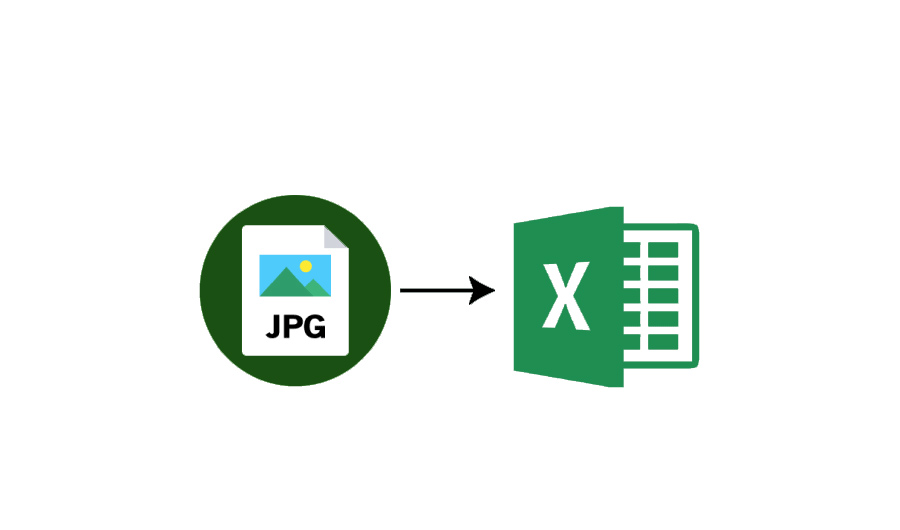
Web Design Systems: Streamline Your Site Build
Have you ever pondered how some of the world’s most successful digital platforms, like Google and Apple, maintain such high standards of user-friendly web design? It’s no secret that behind every interactive web design, there’s a robust framework working silently, yet powerfully—web design systems. As a seasoned web design aficionado, I’ve watched these systems evolve, becoming indispensable tools that not only enhance website development but also set the pace for website design trends. Encompassing a suite of website development tools, these systems offer a methodology for crafting digital experiences that are immersive, intuitive, and incredibly consistent.
The era of web design being a chaotic and time-consuming endeavor is a thing of the past. The process has become remarkably efficient thanks to the emergence of advanced web design services and tools, like those used by Eversite. The key to transforming an ordinary site into a digital masterpiece is understanding and leveraging these revolutionary systems. In our discussion, we’ll delve into the design systems used by industry giants, explore the tools that are reshaping website development, and examine how an evolving interactive web design is shaping the future of online connectivity.
Key Takeaways:
- Discover the transformative impact of using web design systems and how they create a more user-friendly web design.
- Learn why industry leaders are offering unique web design systems and UI kits and UI components such as Google’s Material Design and Apple’s Human Interface Guidelines.
- Explore open-source contributions to web design like IBM’s Carbon and Shopify’s Polaris that empower both global brands and startups alike.
- Understand how integrating Figma UI kits into web design systems can streamline the site building process and align with best practices.
- Examine how unofficial resources and community-driven tools, such as the AirBnB UI kit by Isabella Scheier, fill the gaps in official web design services.
- Unlock the secrets of creating cohesive and interactive web designs that keep up with the latest website design trends.
Embracing Web Design Systems for Brand Consistency
When I examine the landscape of modern digital products, one key factor that consistently propels brands to the forefront is a rock-solid identity. But how can such brand consistency be achieved across a myriad of digital platforms? The answer lies deeply rooted in the effective use of web design systems. These systems offer more than just a templated approach to user-friendly web design; they serve as a foundation for maintaining the soul of your brand at every touchpoint.
Unlike the more temporal standalone pattern libraries, design system components form an extensive vocabulary for designers and developers alike. It’s like constructing a building: the components are the bricks, design guidelines are the architectural plans, and principles are the building codes. And together, they ensure that the structure stands tall without sacrificing its unique aesthetic value. The adoption of these interconnected systems has several palpable benefits, ranging from cross-departmental harmony to ease of onboarding new talents who can speak the same digital design language as the rest of the team.
But the true beauty of these systems isn’t just in the consistency—they embody cost efficiency and brilliantly adapt to the ebbs and flows of responsive design standards. In my time designing, I’ve witnessed firsthand the transformative power they have in solidifying brand stability which, in exchange, deepens customer loyalty. A uniform experience across devices not only cultivates recognition but also sets high watermarks for quality in the competitive marketplace.
The magic, however, doesn’t happen overnight. To weave this intricate web of consistency, it starts with stakeholder buy-in, followed by a meticulous audit of existing assets. Next, there’s the exciting phase of defining a design language—a language that encapsulates a brand’s story through color, typography, and imagery. This blueprint then births a pattern library, equipped with the necessary documentation, which guides the application of the system across real-world scenarios, smoothing out previously complex design conundrums.
The development of a design system is akin to mapping a journey—a journey where the destination is a delightful, memorable brand experience that resonates in every click and scroll of the user. I’ve seen these systems act not just as aids, but as catalysts for innovation, pushing the envelopes of what’s possible in the digital space. They manage to deliver an integrated and responsive design that not only meets but often surpasses user expectations. It’s this commitment to harmony in the design process that ultimately reflects a brand’s dedication to its identity and values.
- Ensuring brand consistency through comprehensive design systems
- Benefits of a unified design language: Improved collaboration and quality
- Cost efficiency and adaptability in the dynamic world of web design
- Building a recognizable identity for user retention and market impact
- The systematic approach to crafting and implementing design systems
Web Design Systems: Key Components and Best Practices
In the digital realm, web design systems are the architects of a brand’s online presentation. A robust system is like a thriving metropolis, where each element from navigational layouts to style guides plays a critical role in creating a cohesive and user-engaging ecosystem. As a passionate advocate for interactive web design, I want to share the foundational blocks and best practices that ensure a web design system not only meets current website design trends but sets the standard for future innovations.
Understanding Design System Components
At the core of effective web design systems are the design system components. Beyond color schemes and font choices, these components unite to establish a visual and functional narrative for a brand’s online presence. Utilizing website development tools and best practices for web design is akin to a maestro conducting an orchestra—each instrument has a part to play in the symphony that is your website. Elements like unified methodologies and UI kits contribute to a symphony of user experiences that are both harmonious and memorable.
Best Practices for Creating a Cohesive Design Language
When crafting a design language, harmony between brand philosophy and aesthetic appeal is paramount. Just as a painter selects a palette to evoke emotions, choosing the right combination of colors, typography, and imagery can communicate the essence of a brand and resonate deeply with the audience. My guiding principle is to ensure that the design language aligns with the vision and mission of the brand, enabling web design services to convey a story that stands the test of time.
Responsive Design Integration
I cannot overemphasize the significance of responsive design in modern website development. The best web design systems incorporate fluid grids and flexible images, adapting to the user’s device like water takes the shape of its container. Integrating responsive design guarantees that the user experience is streamlined and satisfying, no matter the screen size or platform, ensuring that your digital footprint impresses across the entire spectrum of devices.
Collaboration Between Designers and Developers
Creating a transformative web design system is a joint endeavor. It demands a confluence of creativity and technical precision, an intertwining of imagination and code. Fostering a collaborative environment where designers and developers work in unison can streamline the website development process. Shared understanding through tools likes Figma and Adobe XD smoothens out any bumps on the road, letting the design and development journey be one of partnership, innovation, and shared victories.
My extensive experience in deploying web design services has taught me that the best practices for web design are not static; they evolve. As we continue to explore and adapt to the exciting possibilities in web design, staying at the forefront of website design trends is not just beneficial, it’s essential. And at the heart of it all lies a well-constructed, meticulously curated design system—a blueprint for digital success.
Conclusion
In summing up our exploration, it’s evident that its significance in shaping and refining the digital sphere is vast. Employing a web design system goes beyond mere aesthetic alignment; it is a strategic approach that ensures a user-friendly web design. As I’ve highlighted throughout this article, design systems act as the quintessential toolbox that empowers brands to deliver responsive design that meets current demands while setting the pace for future innovations. I can confirm that integrating a design system into our workflow at Bluewebshop has been a game-changer, drastically cutting down on time, effort, and expenses.
Adhering to the best practices for web design, these systems streamline workflow, assuring that every element contributes to a harmonious user interface. By doing so, organizations stand to benefit from an enhanced digital presence—boosting user-friendly web design initiatives that foster enduring brand loyalty. As digital landscapes evolve, the vitality and versatility of design systems will persist, solidifying their role as indispensable constituents in the ongoing narrative of web excellence.
The journey through the world of web design systems reaffirms how pivotal such frameworks are to delivering exceptional web experiences. As someone immersed in this field, I’ve witnessed the transformative impact of these systems firsthand. Their continued integration, adaptation to changing consumer behavior, and the fusion with cutting-edge technology is not just exciting—it’s an absolute necessity for survival and success in today’s fiercely competitive digital marketplace.
FAQ
What exactly are web design systems?
Web design systems are comprehensive frameworks encompassing style guides, design patterns, components, and methodologies used to establish a cohesive and consistent brand presence online. They include guidelines for typography, color schemes, UI elements, and much more to help create user-friendly and responsive designs. Inputs from industry leaders like Google with Material Design and Apple with Human Interface Guidelines offer tangible examples of such systems.
How do web design systems contribute to user-friendly web design?
They ensure consistency and coherence in the design, which enhances usability. By following established patterns and components within a system, designers create interfaces that are intuitive and easier for users to navigate. This standardized approach improves the overall user experience.
Can integrating a web design system speed up the website development process?
Absolutely! Since a web design system has pre-defined components and guidelines, it can streamline the process of building a website, saving time for both designers and developers. Utilizing these systems, teams can quickly prototype, build, test, and iterate designs, improving efficiency considerably.
What are some current website design trends that web design systems accommodate?
Current trends that web design systems can facilitate include minimalistic design with a focus on usability, the use of bold typography and vivid colors for emphasis, micro-interactions for an engaging user experience, and incorporating motion design for visual storytelling. By using a design system, these trends can be implemented more consistently and quickly across a brand’s digital assets.
What kind of web design services can benefit from using a design system?
Web design services across the board can benefit—whether you’re focusing on creating corporate websites, eCommerce platforms, portfolios, or educational sites. The versatility of design systems makes them ideal for projects that require a unified brand language, ensuring all digital products feel part of the same family.
Are there any notable design system components I should know about?
Key components include UI kits, style guides, design tokens, pattern libraries, and documentation. These components are crucial for establishing a standardized design approach and ensuring that both developers and designers are on the same page when it comes to building and scaling products.
What are the best practices for creating a design system?
The best practices involve establishing clear design principles that reflect the brand’s core values, using a consistent visual language for colors, typography, and imagery, and aligning the overall design with the emotional impact you want to have on customers. Additionally, thoroughly documenting these decisions is vital for maintaining brand consistency over time.
How important is responsive design in web design systems?
Responsive design is absolutely essential in creating web experiences that are functional and appealing across all devices and screen sizes. Modern web design systems make responsive design a core principle, ensuring that digital products are accessible and user-friendly for everyone, no matter where or how they’re accessing your content.
How can designers and developers effectively collaborate using a web design system?
By sharing a common language through the design system, designers and developers can work more synergistically. Tools like Figma, Sketch, and Adobe XD support this collaboration by offering shared libraries and real-time updates, which helps keep everyone in sync and makes the design-to-development process more seamless and error-free.
What are some examples of best web design systems?
Here are 8 examples of the best web design systems for brands along with their links:
- Google Material Design System – Material Design
- Apple Human Interface Guidelines – Human Interface Guidelines
- Microsoft Fluent Design System – Microsoft Design
- IBM Carbon Design System – Carbon Design System
- Airbnb Design – Airbnb Design
- Atlassian Design System – Atlassian Design System
- Shopify Polaris Design System – Shopify Polaris Design System
- Mailchimp Design System – Mailchimp Design System
These design systems are excellent resources for creating better user interfaces and offer valuable insights and guidelines for designers and developers.





